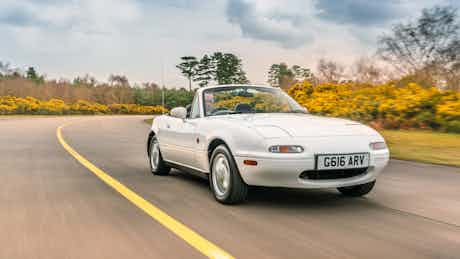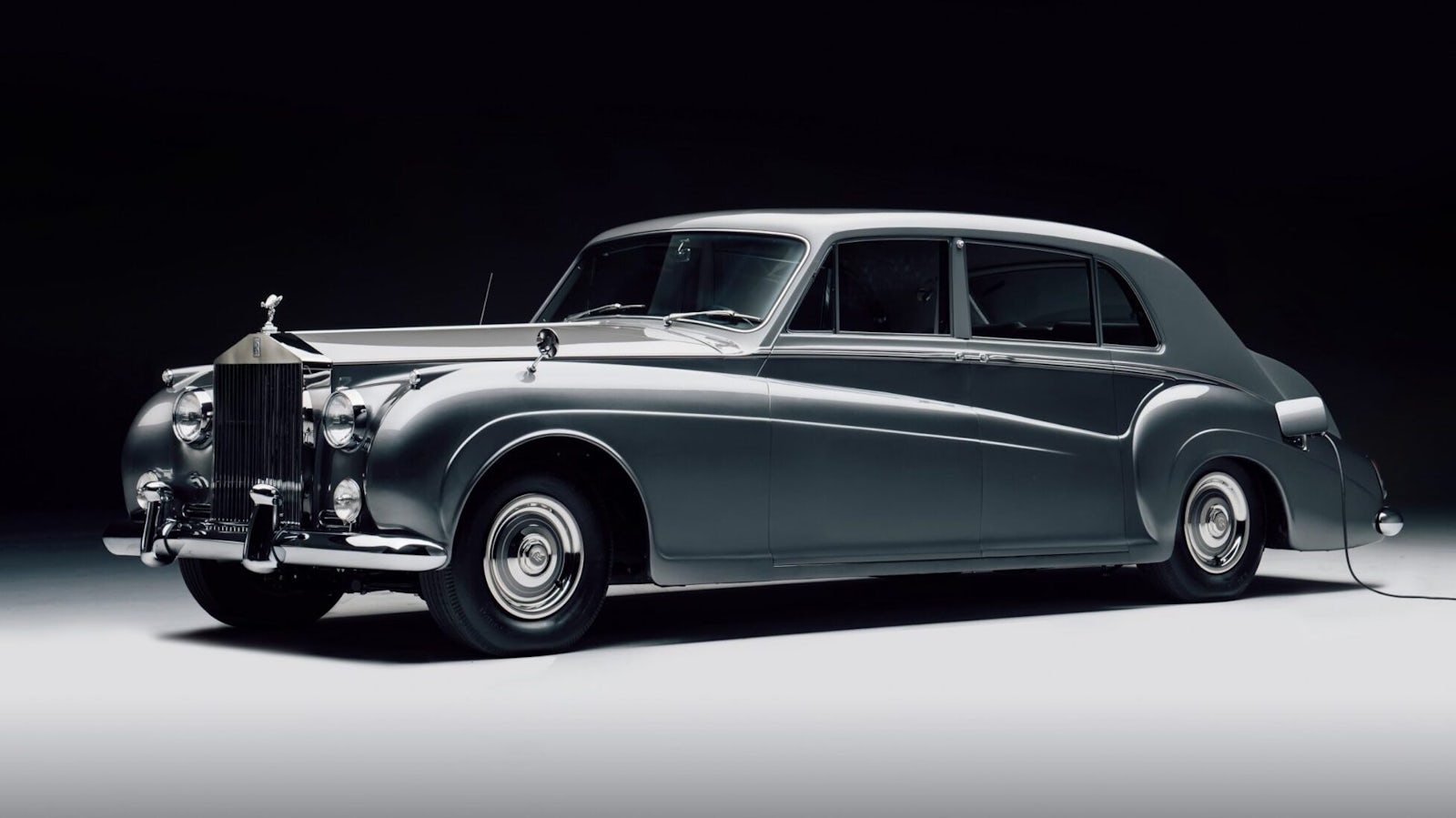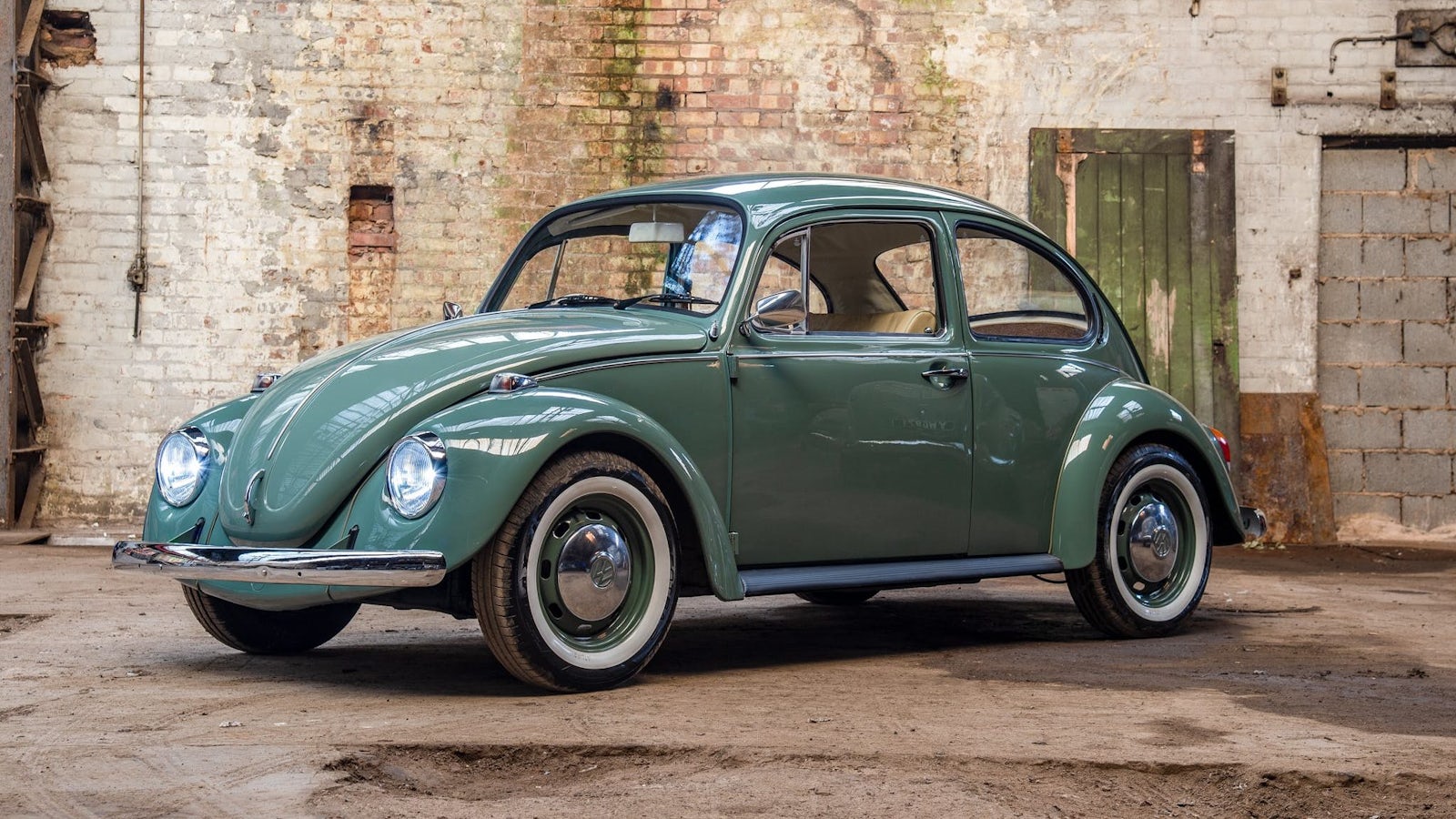10 of the best classic cars to convert to electric
March 22, 2023 by carwow staff

Converting classic cars to electric is a great way to revitalise a heritage vehicle. Here’s how to do it and the best cars for a zero-emission makeover.
Classic electric car conversions are becoming increasingly popular as an eco-conscious way of enjoying classic vehicles. Removing the combustion engine and replacing it with a zero-emission powertrain is a great way to revitalise older model.
What makes a car suitable for converting to electric? Well, any car could be converted for the right price, but the simplicity of electric powertrains makes them better-suited to older, more unreliable classics, while their near-silent operation works well on cars with a focus on a more serene, luxurious driving experience.
Our pick of the 10 best classic cars to convert to electric:
- Volkswagen Camper
- Mini Cooper
- Mazda MX-5
- Porsche 911
- Rolls-Royce Silver Cloud
- Jaguar E-Type
- Land Rover Defender
- Volkswagen Beetle
- DMC DeLorean
- Aston Martin DB6
1. Volkswagen Camper

Year of introduction: 1949, 1967 (T2, pictured)
Conventional engine: various, 1.1 to 2.0-litre four-cylinder
Typical EV conversion: 53kWh battery, 70kW charging, 140-mile range, 90hp
Why it’s suited to electric: adding green power to the free-living vibe
There are few classic cars that fit the electric car ethos better than an early Volkswagen Camper. Synonymous with hippy culture, it’s perfect for converting to an eco-friendly zero-emission powertrain.
The standard petrol engine was underpowered, particularly by today’s standards and when loaded up with equipment for a weekend away, both issues that are fixed by an electric motor. Conversions don’t come cheap, though, with some firms fitting kits for £60k plus…
2. Mini Cooper

Year of introduction: 1959
Conventional engine: various, 0.8 to 1.275-litre four-cylinder
Typical EV conversion: 19kWh battery, 6.6kW charging, 100-mile range, 75hp
Why it’s suited to electric: EV zip pairs well with the nippy Mini
The classic Mini is the perfect city car thanks to its dinky proportions, while EVs are particularly good around town where you’ll see maximum range between charges.
Various companies already offer conversions for these models, meaning there are established processes for updating Minis in place. Despite not having much room for a big battery pack, one example promises a range of up to 250 miles.
3. Mazda MX-5

Year of introduction: 1989
Conventional engine: various, 1.5 to 2.0-litre four-cylinder
Typical EV conversion: 25kWh battery, 6.6kW charging, 100-mile range, 120hp
Why it’s suited to electric: top-down, exhaust-free sporty fun
On the face of it, fitting a heavy battery pack to a sports car famed for its pure, lightweight handling doesn’t make too much sense. However, a punchy electric motor would bring a new lease of life to the miniature Mazda, which has never been known for having a particularly thrilling engine.
UK-based Zero EV has switched an MX-5 to electric power, fitting the batteries under the bonnet and squeezing everything else into spaces vacated by combustion engine-related gubbins. The result is that the 50/50 weight balance front to rear remains, which is good news for handling.
4. Porsche 911

Year of introduction: 1964
Conventional engine: 2.0 to 4.0-litre boxer six-cylinder
Typical EV conversion: 62kWh battery, 50kW charging, 200-mile range, 320hp
Why it’s suited to electric: classic Porsche looks, modern Porsche performance
The Porsche 911 is a story of stubborn commitment. The rear-engined layout isn’t ideal for a sports car – the rear-biased weight distribution aids traction under acceleration but doesn’t help the front wheels grip up in corners – but the German firm has made it work and created one of the best-loved vehicles in history.
However, while the design of older models has aged beautifully, the performance on offer hasn’t aged quite so well. A firm called Everatti has fitted an EV powertrain to a classic ‘964’ 911 in a way that is said to be fully reversible if the owner changes their mind.
With the 247hp output upped to 500hp, resulting in a 0-60mph time that drops to under four seconds (about two quicker than standard), it’s unlikely many owners will want to switch back.
5. Rolls-Royce Phantom V

Year of introduction: 1959
Conventional engine: 6.2-litre V8
Typical EV conversion: 120kWh battery, 50kW charging, 300-mile range, ‘sufficient’ power
Why it’s suited to electric: no car is better suited to silent electric progress
Electric motoring and luxury cars are a match made in heaven. Companies like Rolls-Royce have spent decades trying to make combustion engines as quiet and imperceptibly smooth as possible – two features inherent to EVs.
British firm Lunaz builds low volume runs of converted classics, but its renovations go the extra mile. Not only is the petrol engine removed and replaced with a motor and 80kWh battery pack, capable of a claimed range of 300 miles, the rest of the car is stripped back and rebuilt using traditional methods. Modern touches such as an infotainment system and climate control bring these classics up to date. As you may have guess, though, such a conversion doesn’t come cheap, with Lunaz’s Roller conversions rumoured to cost as much as £500,000.
6. Jaguar E-Type

Year of introduction: 1961
Conventional engine: 3.8 straight six to 5.3-litre V12
Typical EV conversion: 62kWh battery, 50kW charging, 200-mile range, 200hp
Why it’s suited to electric: the most beautiful car in the world, with en vogue propulsion tech
The Jaguar E-Type’s sleek design and sophisticated character make it a good candidate for the refined driving experience of an electric powertrain.
In fact, Jaguar itself pulled some parts off the I-Pace, its electric SUV, and fitted them to an E-Type. The battery sits where the engine used to be and the motor replaces the gearbox, with the remarkable result being a car that is 46kg lighter than the original.
7. Land Rover Defender

Year of introduction: 1983
Conventional engine: 2.0 four-cylinder to 5.0 V8
Typical EV conversion: 81kWh battery, 50kW charging, 180-mile range, 270hp
Why it’s suited to electric: be the greenest of the green laners
Land Rover recently reinvented the Defender, which despite being one of the most capable off-roaders around, is now pitched more as a premium family SUV. However, those who need a back-to-basics 4×4 are often drawn towards classic models, which have more rugged appeal.
When off-roading, the instant torque of electric motors can be a massive help, while these old Defenders aren’t particularly well known for their reliability, something that can be remedied by switching from combustion.
8. Volkswagen Beetle

Year of introduction: 1938
Conventional engine: 1.1 to 1.6-litre boxer four
Typical EV conversion: 26kWh battery, 6.6kW charging, 120-mile range, 120hp
Why it’s suited to electric: laid-back EV attitude and improved performance
Rumours of an official electric Beetle revival have been cropping up for years, but if you can’t wait for them to be confirmed, there are plenty of reimagined classics that have more character than any modern reinterpretation could muster up.
Volkswagen has even jumped in on the action, teaming up with German firm eClassics to create electric Beetles using the electric motor, battery and gearbox from the firm’s e-Up city car.
9. DMC DeLorean

Year of introduction: 1981
Conventional engine: 2.8-litre V6
Typical EV conversion: 42kWh battery, 50kW charging, 140-mile range, 295hp
Why it’s suited to electric: forward to the future, can go above 88mph
The DeLorean is best known for its starring role in the Back to the Future series, but in reality it was slow, unreliable and not much fun to drive.
So it’s no surprise that enthusiasts have been working to make the DeLorean driving experience a bit closer to what its fantastic looks and cult status deserve. With a modern electric powertrain, 88mph should come up in no time.
10. Aston Martin DB6

Year of introduction: 1965
Conventional engine: 4.0-litre straight six
Typical EV conversion: 60kWh battery, 22kW charging, 200-mile range, 330hp
Why it’s suited to electric: creep up on enemy agents in silence
If you want to live out your James Bond spy thriller fantasies authentically, you’ll need an Aston Martin DB5, which was the star car of 1964’s Goldfinger. However, it’s the DB6 that is widely considered to be the epitome of classic Aston Martin motoring.
There’s already an electric conversion on sale from British firm Lunaz, costing the best part of £1 million, which sees the 4.0-litre six-cylinder engine replaced with an electric motor offering brisk acceleration and a battery that sees a claimed 250 miles to a charge.
Where can I convert a classic car to electric?
There are scores of independent companies offering EV conversions for classic cars, and many different options in terms of approach. Some companies will sell you a kit you install yourself if you’re handy with a spanner (and trained in the safe handling of high-voltage systems), or you can have a pre-supplied kit installed by another firm. Others conversion companies offer a one-stop shop, sourcing a donor car and installing their bespoke EV powertrain themselves. A couple of original manufacturers, such as the BMW-owned MINI brand, have indicated interest in performing their own conversions, too.
Prices, understandably, vary, from as little as £8,000 for a basic motor, power management and small-ish battery, to over £1 million for the most sophisticated conversions of desirable cars. Some installations are easily reversible, too, addressing potential concerns over heritage and history some classic-car fans may have. Our guide to converting a classic car to electric has more information.
Cars Change? Carwow!
Looking for a new set of wheels? With Carwow you can sell your car quickly and for a fair price – as well as find great offers on your next one. Whether you’re looking to buy a car brand new, are after something used or you want to explore car leasing options, Carwow is your one stop shop for new car deals.















